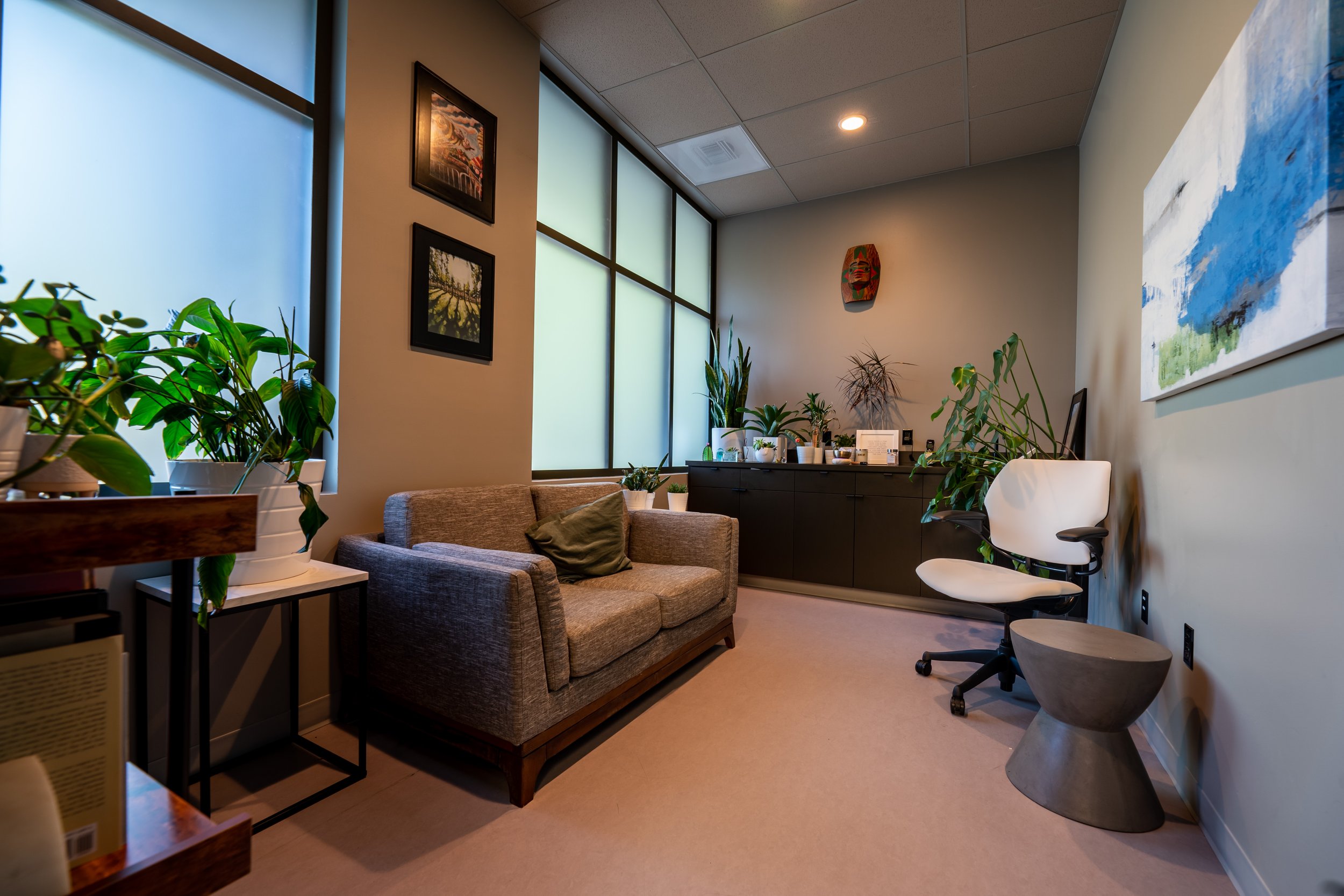
PHOTOBIOMODULATION
WHAT IS PHOTOBIOMODULATION?
Light therapy, also known as Photobiomodulation (PBM) is advanced technology involving the use of light from both the visible and the near-infrared regions of the light spectrum to promote physiological changes. It involves the use of light emitting diode (LED) and low-level laser devices. The field of PBM is generating new research on an almost daily basis, and has been shown to have a wide range of beneficial applications in virtually all neurological conditions. Light therapy is another foundational aspect of your NeuroRescue Program.
HOW DOES PHOTOBIOMODULATION HELP ME?
PBM has demonstrated a long list of beneficial therapeutic outcomes. Light therapy has shown to be helpful in decreasing both acute and chronic pain. It has been proven effective in decreasing inflammation. It has demonstrated benefits in modulating the immune system. It can speed healing and tissue regeneration. Light therapy has also been shown to improve blood flow, and to improve energy production within cells. It has been demonstrated to promote repair processes within brain tissue, and to offer neuroprotective benefits against neurodegeneration. These mechanisms can provide a profound improvement in neurological function. Light therapy has been shown to be effective in treating a wide range of neurological conditions, including:
Concussions and Traumatic Brain Injuries | Dizziness and Vertigo | Headaches and Migraines | Neurodegenerative Disorders | Chronic Pain | Movement Disorders | Neurodevelopmental Disorders | Dysautonomia | Strokes and Vascular Disorders | Peripheral Nervous System Disorders | Mental Health Conditions
WHAT TO EXPECT:
We use a number of different light therapy devices depending on your clinical presentation. We use passive devices involving therapy mats and pillows that emit several frequencies of light through LEDs. Therapy is as simple as lying down and resting for a short time while the LEDs activate your physiological processes. We also use a number of LED headsets designed to stimulate and energize specific brain and cerebellar regions. These devices are often worn during therapy sessions, as they promote cellular energy and allow us to increase your stimulation during exercises without fatigue. These devices can be used with a nasal emitter, which allows us to target specific frontal lobe pathways. We also use a number of low-level laser (LLL) devices. These are applied directly to the involved tissue. As these are higher powered devices, eye protection is always used when these are employed.
FAQs
-
Yes. There are some specific conditions where laser therapy may be contraindicated. Your provider will have already determined if you are an appropriate candidate for light therapy before recommending any procedures.
-
Light therapy feels like nothing at all. Most forms of light therapy do not produce any sensation whatsoever. LED and low-level laser therapies are extremely comfortable.
-
Research has yet to fully explain all of the benefits of light therapy, however at present there are three accepted mechanisms by which PBM produces beneficial changes. PBM research is continually evolving, and there are likely many more mechanisms involved that have yet to be discovered. Near-infrared light can penetrate deep into soft tissue to stimulate peripheral nerves. When applied as a transcranial stimulus, it can also penetrate through the skull. Depending on the application, it can reach a therapeutic depth of 50mm, allowing it to directly stimulate cells of the cerebral cortex.
Cells burn glucose in an oxygen rich environment to produce adenosine-triphosphate (ATP). The ATP molecule powers most of the cellular reactions throughout the body, and is considered to be the main source of cellular energy. When oxygen is unable to bind to the enzyme cytochrome C oxidase, the reactions in this process become far less efficient, and ATP production drops dramatically. This causes many cellular functions to fail. In states of chronic inflammation and oxidative stress, nitric oxide can bind to cytochrome C oxidase instead of oxygen, which renders the enzyme inactive. PBM changes the enzyme’s activation energy, causing it to release nitric oxide so oxygen can bind once again. This restores ATP production, and thus improves cellular function. The released nitric oxide causes surrounding capillaries to dilate, which also serves to improve blood flow to the tissue and further increase ATP production.
There are also analgesic (pain reduction) mechanisms involving the activation of TRPV1 receptors on the cell membrane, and activation of genetic transcription factors that modulate inflammatory processes and promote cellular repair. The involvement of these mechanisms varies with the type of light therapy applied, but it appears that all of them are active in all PBM applications to some degree.
The combined benefits of these mechanisms can lead to remarkable changes. PBM therapy can increase blood flow, improve energy production, decrease inflammation, promote brain repair, and provide neuroprotective benefits. Because of these mechanisms, PBM has shown beneficial changes in acute and chronic stroke, concussions and traumatic brain injuries, Alzheimer’s and Parkinson’s diseases, depression and anxiety states, cognitive decline, and chronic pain states, among many conditions.
-
In many cases, the changes seen from PBM can be immediate. We often use LED therapy as a way to “recharge” the brain between therapies, so we can do more in our treatment sessions without hitting your fatigue point. Laser therapy can also produce immediate pain relief. The effects of PBM therapies are also generally additive, leading to progressive improvement with repetitive applications.
LET’S GET YOU BACK TO LIVING YOUR BEST LIFE
“I can’t say enough good things about this experience. I have just wanted my life back, and had almost given up. I am ever so indebted to this team for giving me my life back, and I didn’t think it would ever happen, but I do, I have my life back. That is more than anyone else has ever been able to give me, so thank you from the bottom of my heart.”

-
We use advanced neurodiagnostic technologies and cutting edge neurorehabilitation strategies that are unique to your brain and condition.
-
We use high frequency treatment over 5-10 days, to bring you maximum results in the shortest time possible.
